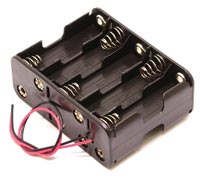
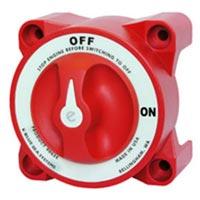
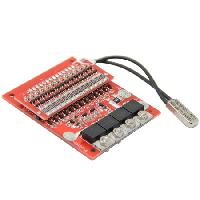
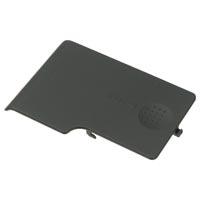

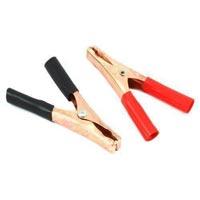

Scrap Charging Machines
Get Price Quote
SCRAP CHARGERS are suitable for charging the scrap material in to the melting furnaces of SCRAP RECYCLING / ALLOYING units where scrap charging time can be drastically reduced as against manual charging. Charging machine not only reduces manpower required for charging but also makes it a safe operation and reduces possible chances of accidents which may cause because of explosion or metal splash. Since charging time is significantly reduced, door open time is also reduced which straight way results in energy saving as most of the heat contained is normally lost when door is kept open for manual charging which requires more energy to compensate. Distinct benefits of FURNTECK’s SKLENNER / Reverbratory furnaces 1.Melting and Holding is done in single chamber. 2.No blind corners in refractory which allows easy and thorough cleaning of furnace. 3.Metal tapping is possible through PLUG SYSTEM / HYDRAULIC TILTING. 4.Furnace can be optionally equipped with AIR RECUPERATOR. 5.Large full width door access can be provided in order to clean and charge furnace easily

vacuum dry charging machine
Get Price Quote
1. Capable of dry charging automotive and industrial battery negative plates. 2. Batch process gives consistent quality plates with over ninety per cent free lead content. Plates have high capacity charge retention. 3. No environmental problems. 4. Compact size with low layout cost. 5. Automatic cycle duration of eight to ten hours. 6. Rugged construction. 7. Easy to operate. 8. High productivity. 9. Low maintenance costs. 10. All work instructions documented and given. 11. Maintenance and service manual supplied along with the machine. 12. Operator training provided at our works. 13. Standard components used in the manufacture. 14. All safety parameters considered. 15. No fumes or residual waste. 16. PLC and data logger ensure accurate process control. FAQ's 1. What are the advantages of selling a dry charged battery as against a dry uncharged battery assembled with formed plates? A battery dealer is a person who never wants to displease his customer and at the same time wants to have the maximum business. This is not unusual in any region and understandable from the businessman’s point of view. If a battery manufacturer gives the dealer a dry charged battery the manufacturer and dealer derive the following benefits:- The rest period after acid filling is around 2 hrs. as against 12 to 16 hrs. There are no batteries lying around waiting for charging and occupying costly floor space. The charging duration after acid filling is 8 to 12 hrs. as against 55 to 72 hrs. The need for capital investment in costly chargers is eliminated. The charge input is 1 C as against 3 to 5 C – thereby charging cost is lowered. The inventory carrying cost at dealer’s premises w.r.t. charged battery holding in stock is substantially reduced. The quality of batteries delivered to customers is good since batteries do not get heated during initial charging thereby damaging the internal components of the battery. Due to this reason the battery warranty claims are reduced / eliminated. The possibilities for export of batteries / battery plates open up leading to a wider market penetration. 2. Is it possible to use the dry charging machine for drying industrial battery (stationary & traction) negative formed plates ? Yes – the machine can be used to dry the formed negative plates of any type of lead acid battery. I.e. automotive, motor cycle, SMF, stationary, semi traction or traction battery. 3. In what way is a dry charged battery different from a battery made with formed plates ? In the case of battery made with formed dried plates the positive plates are fully charged whereas the negative plates have discharged after formation due to the oxidation reaction which is an exothermic reaction that has taken place when the plates were taken out of the formation jars. Due to this phenomenon batteries made with formed plates need a long duration of charging at a slow rate of charging i.e. low current input. The input in terms of Ah is also high. Basically the negative plates need to be charged without heating up the positives which are already fully charged. In the case of battery made with dry charged formed negative plates and dried formed positive plates the batteries can be commissioned fast since the negatives are not discharged after formation. 4. For how long a duration do the negative plates stored as plates retain its dry charge characteristics? The retention of dry charge characteristics in negative plates shall depend on the method of storage of plates and the nature and quantity of certain additives in the negative paste mix. If the plates are not exposed to atmospheric moisture and oxygen the period of storage can be as long as 12 to 15 months. It is therefore necessary to cover the fully dried cool plates with polythene wrapping in a suitable manner. Dried silica gel pouches in cotton bags help in keeping plates dry. Further at the time of negative paste mix preparation an addition of oil or stearic acid is recommended. This forms a protective layer on plate surface preventing oxidation of negative plates with a consequent loss of dry charge characteristics. 5. For how long a duration does an assembled battery having dry charged negative plates retain its dry charge characteristics? The retention of dry charge characteristics in an assembled battery shall depend to a great extent on The residual acid in the negative dry plates. The residual acid in the dried positive plates. The residual moisture in the dried positive plates. The sealing of vent holes of the battery to prevent moisture ingress. Since moisture from positive plates can travel to negative plates and start the oxidation process it is necessary to dry the positive plates also thoroughly before assembly.Residual acid in either positive or negative plates can cause deterioration of dry charge characteristics since the hygroscopic sulphuric acid can attract the atmospheric moisture leading to oxidation of negative plates 6. What is the quality parameter which indicates that the dried plates are of acceptable nature? The free lead content in the active material of formed dry negative plates – taken out of the machine after correct processing – is an indicator of the quality of the plate. 7. How can this free lead content be verified? This can be verified by chemical testing in the laboratory. In case detailed procedure of testing is required please contact M/s Unik Techno Systems Pvt. Ltd.. 8. Is there any other simple method which indicates that the dried negative plates are of acceptable quality? A simple indication is available if it is observed that the assembled battery temperature does not increase more than 8 degree Celsius to 10 degree Celsius. sp.gr. does not fall by over 0.02 to 0.04 points. over a one hour period after filling of acid in the battery. 9. How important is the washing of negative plates prior to dry charge process? It is important to wash the negative plates free of acid and check whether the wash water pH is between 5.5 to 6.0 prior to loading the plates on to the dry charging chamber. Please note that it is equally important to load the washed plates into the machine within an hour of such a complete wash – free of acid. In case the plates have to be stored for a long period in water after washing, it is necessary to retain some acidity in the water. Hence it is recommended to do the washing in two stages. In stage one wash plates such that the wash water pH is around 4.5 to 5.5. Keep negative plates in a tank of such an acidic water. As and when the negative plates are to be dried and approx. an hour or so prior to loading into the machine the second stage of washing can be carried out i.e. plates can be washed to a pH of 5.5 to 6.0. If the plates are not washed completely free of acid prior to loading on to the machines the seals of the vacuum pump shall get damaged leading to machine breakdown and production downtime.
Best Deals from Charging Machine

powder charging system
100,000 - 500,000 Per No
1 Set (MOQ)
To charge powders from drums/ sacks to silos/ reactors at rates exceeding 2000 kg/hr and over 25 meters. Easy to use. Easy to wash. You can dismantle the whole system in under 3 minutes for washing. No bulky valves/ electrical to be dismantled. All controls are mounted in convenient Starter box. Easy to replace PTFE cartridges for filtration. Optional HMI for multi product setups. CIP/ SIP options possible. High Technology powder conveying in one simple package.

powder charging system
Get Price Quote
Powder Charging System is the lean-phased vacuum-conveying mode, which achieves material transfer by introducing the material into the moving stream of air at the desired rate. The PCS uses both vacuum and pressure to move powders and dispenses them with the help of gravity. It can charge powders from drums/ sacks to silos/ reactors at rates exceeding 4000 kg/hr and over 25 meters. . The system ensures the safe transfer of powdered material directly into mixing vessels or reactors, reducing dust generation and wastage as compared to manually charging powdered material through a manhole or a chute. The main purpose of having this contained system is to prevent operator exposure to the sensitive powders which may be hazardous to health and to minimize environmental exposure and cross-contamination to the product. Being operated on a vacuum principle the system is intrinsically dust free. The airflow is promoted by creating negative pressure throughout the system using the vacuum pump.
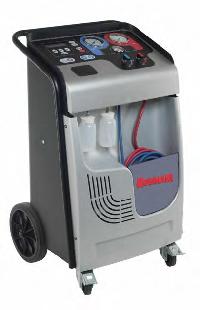
charging machine
Get Price Quote
charging machine, Circular Vibrating Screen, hydraulic lifting system

Conair AC gas charging machine
Get Price Quote
Conair AC gas charging machine, Foot Operated Bike Lift, Pneumatic Bike Lift